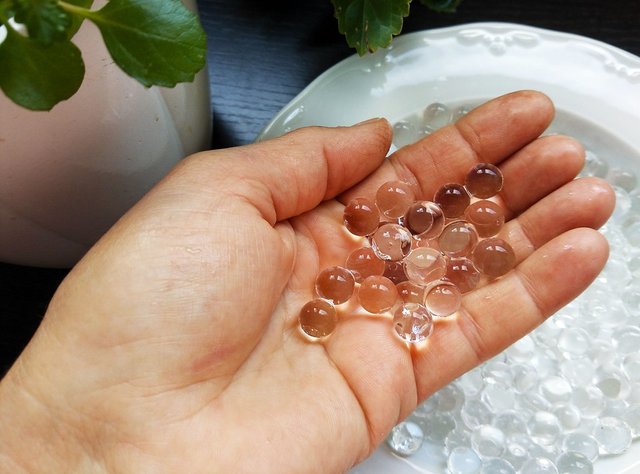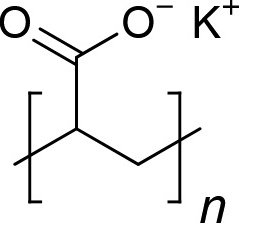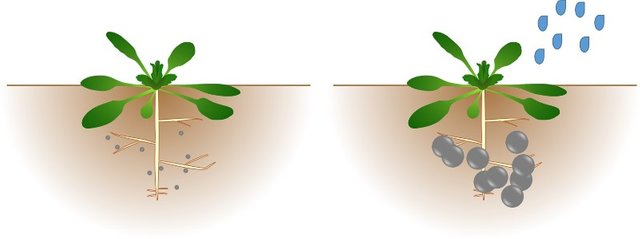Solid rain
A new technology to store rainwater in solid form appears with an interesting option to help plants and crops to sustain themselves during periods of drought also reducing irrigation water consumption.

The application of a polymer would help to store rainwater in the soil. Source: pixabay.com.
It is actually the application of a biodegradable polymer to retain rainwater by encapsulating it in the network of this polymer, being able to retain up to 200 times its weight in water for 6 weeks, in essence, 10 grams of the polymer can retain up to one liter of water.
This interesting polymer is potassium acrylate, a hydrogel or superabsorbent polymer consisting of cross-linked hydrophilic polymeric networks that are capable of absorbing large amounts of water without losing their three-dimensional shape. Potassium acrylate granular powder is biodegradable and non-toxic to soil or plants.

Chemical structure of potassium polyacrylate. Source: wikipedia.com.
This polymer as a hydrated gel helps plants because they can be hydrated without having to wait for rain or irrigation, as it has the property of easily releasing the absorbed water and nutrients, allowing them to be available to plants according to their absorption-release cycles, facilitating their development in periods of drought. How it works:
- The granulated polymer is buried at the plants' root level, and when it rains it encapsulates the water.
- The water remains attached to the polymeric network in solid form and while it is in that state the plant consumes it little by little according to its needs.
- When the water retained in the polymer is totally consumed by the plant, the polymer returns to its initial solid state, being ready to repeat the process when it receives water when it rains again.

When it rains the polymer encapsulates the water. Source: image created by @emiliomoron using a public domain image.
According to information provided by the product manufacturer, only 25 kg of the polymer is required per hectare of crop, significantly saving irrigation water use and hydraulic infrastructure costs, as in some cases it can completely replace irrigation systems.
This type of hydrogels can be a great solution for regions where soils receive too little rainfall or are too permeable to keep the root zone moist for long enough to meet plant needs.
On the other hand, this product can also be used to reduce the maintenance costs of sports fields and gardens, preserving lushness and greenery and reducing water consumption by reducing the frequency of irrigation and optimizing rainwater harvesting.
Thanks for coming by to read friends, I hope you liked the information. See you next time.

This is my first time of reading about retaining water in biodegradable polymers. I believe that this technology will come in handy for places that normally have water challenges at some points. Nice piece buddy
@tipu curate
Upvoted 👌 (Mana: 3/5) Get profit votes with @tipU :)
Thanks for the support my friend!
Informative article @emiliomoron
Things are getting interesting as technology is improving. Though, I still don't get how Polymer works fully, but it seems very interesting.
Thanks for sharing with us
Greetings friend, the polymer works like the absorbent of a diaper, only it is not toxic to the soil and the plant can absorb the moisture it accumulates. No doubt it can be very useful, thanks to you for reading.